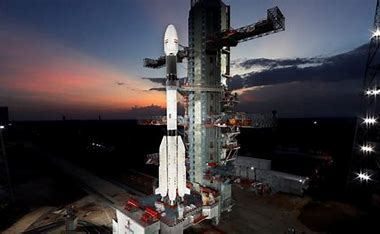ISRO has announced that its latest earth observation satellite, EOS-08, is scheduled for launch on August 16, 2024. This mission will be carried out aboard the third and final developmental flight of the Small Satellite Launch Vehicle (SSLV)-D3. Initially planned for August 15, the launch was postponed by a day for undisclosed reasons.
Mission Objectives
The primary goal of this mission is to complete the development of the SSLV, paving the way for its operational use in future space missions. The mission is a collaborative effort between Indian industry and NewSpace India Limited (NSIL). The launch will take place at the Satish Dhawan Space Centre in Sriharikota, within a one-hour window starting at 09:17 IST.
Satellite Overview
EOS-08 is built on the Microsat/IMS-1 bus and has a mission lifespan of one year. Weighing approximately 175.5 kg, the satellite will be launched using the SSLV-D3/IBL-358 launch vehicle. The satellite’s primary power output is 420 watts, and it is equipped with three significant payloads:
- Electro-Optical Infrared (EOIR) Payload: This payload captures images across the Mid-Wave Infrared (MIR) and Long-Wave Infrared (LWIR) spectrums, functioning day and night. Applications include satellite-based surveillance, disaster monitoring, fire detection, and industrial disaster assessment.
- Global Navigation Satellite System-Reflectometry (GNSS-R) Payload: This payload demonstrates the potential of GNSS-Reflectometry in remote sensing applications. It supports the analysis of ocean surface winds, soil moisture, and cryosphere studies in the Himalayas, along with flood detection.
- Silicon Carbide (SiC) UV Dosimeter: This dosimeter will monitor UV irradiance for the Gaganyaan Mission’s Crew Module. It also serves as a high-dose alarm sensor for gamma radiation, enhancing safety during space missions.
Technological Advancements
EOS-08 marks a significant advancement in satellite technology, particularly with the introduction of an Integrated Avionics system known as the Communication, Baseband, Storage, and Positioning (CBSP) Package. This system consolidates multiple functions into a single unit, offering up to 400 GB of data storage. It incorporates advanced components like a structural panel with an embedded PCB, a Micro-DGA (Dual Gimbal Antenna), an M-PAA (Phased Array Antenna), and a flexible solar panel.
Conclusion
ISRO’s EOS-08 satellite launch represents a significant leap in earth observation and satellite technology. The mission not only finalizes the development of the SSLV but also demonstrates advanced capabilities in disaster monitoring, environmental surveillance, and remote sensing, all critical for India’s space ambitions.























